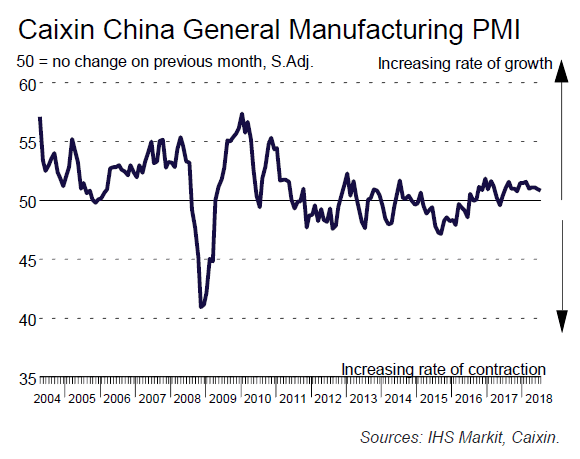China Caixin PMI manufacturing dropped -0.2 to 50.8 in July, down from 51.0, slightly below expectation of 50.9. It’s also the lowest since November 2017. The key points in the release are slower increase in output and new orders, fastest decline in new export sales for over two years and solid rise in input costs.
Commenting on the China General Manufacturing PMI™ data, Dr. Zhengsheng Zhong, Director of Macroeconomic Analysis at CEBM Group said:
“The Caixin China General Manufacturing PMI slipped to 50.8 in July from June. The reading has not been this low since November 2017.
“The sub-indexes for output and new orders both fell, but remained in expansionary territory, while the employment sub-index picked up despite remaining in contractionary territory. New export orders shrunk at the fastest pace since June 2016, indicating the export market continued to deteriorate.
“The sub-indexes for output charges and input prices both dropped, but remained in expansionary territory, pointing to easing pressure on prices. The sub-index for future output edged up, reflecting that goods producers were more optimistic that production would grow over the next 12 months.
“The sub-index for stocks of finished items contracted at a steeper rate in July, while the sub-index for stocks of purchased items started expanding again — a positive sign that companies had reduced their stocks of finished products and replenished stocks of purchases. The sub-index for suppliers’ delivery times rose, even though it failed to make it into expansionary territory, which might imply an improved capital turnover among manufacturers.
“In general, the survey signaled a weakening manufacturing trend as a grim export market dragged on the sector’s performance. The positive drivers were the increase in stocks of purchases and easing pressure on capital turnover.”













